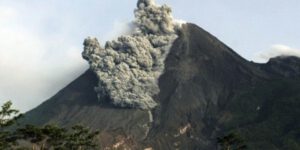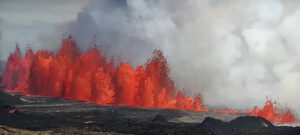On the evening of August 22, the anticipated volcanic eruption at Svartsengi in Iceland began. Around 9:25 PM, a new fissure opened along the Sundhnukur crater row. The initial activity was observed east of Sýlingarfell, where a steam plume rose over a kilometer high. From there, the fissure extended for 4.9 kilometers, primarily in a northern direction. Lava fountains erupted from the fissure, feeding lava flows that moved eastward and westward. There is again a risk that the main road to Grindavik, the Grindavíkurvegur, could be flooded by lava. However, no lava flows were initially observed heading toward Grindavik. Since the seismic activity was concentrated in the northern section of the Sundhnukur crater row, it was believed that the fissure would not extend further towards Grindavik.
The eruption was preceded by a brief seismic crisis that began at 8:48 PM UTC. Most of the epicenters were located between Stóra-Skógfell and Sýlingarfell, accompanied by increased pressure in boreholes. Minutes before the eruption, the Icelandic Meteorological Office (IMO) issued a warning that a magmatic intrusion was spreading and that an eruption was imminent.









